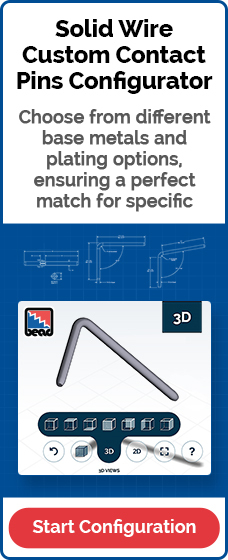Design for manufacturing (DFM) is an engineering practice in wide use today. It's the designing of products so that they're easier and more cost-effective to manufacture, while still functioning the way they should.
How much of a part does design play in lowering production costs? In the case of DFM, where quality, cost, and ease of production are of equal importance, every component must be evaluated to determine whether or not there exists a better option.

DFM in Practice
To understand why DFM is needed, let's look at a hypothetical case. The product gets handmade and has all the optimization you can get given current technology and capital. It's time to go to production. The first tooling or molds get finished and the assembly process starts. However, there's a problem with tolerances and the assembly process that wasn't foreseen.
Things are at a standstill. Either that part needs to be replaced or the process needs to be adjusted. But often, it’s more economical to redesign a specific component rather than switching it with a lower-cost option. This approach, which leverages a custom approach, helps to minimize costly hold-ups and provide lasting solutions.
Alternatively, committing to a redesign and identifying a manufacturer with better practices can help to save time and money. From process, design, materials, environment, and testing, these five principles of DFM help cut costs by nearly a third while granting a more accurate project timeline.
DFM Before Production
When leveraged at the earliest stages of a project, DFM becomes an opportunity for cost avoidance. The sooner it can be incorporated the smaller the chance for a redesign. From material considerations and sustainability practices to cutting costs in design and a review of the process, DFM requires focusing on the final outcomes of a project while keeping careful consideration of every component involved.
There are some important questions that come up when talking about PCB or electronics design. Are my prototype files different from the original manufacturing files? Is the geometry fine, but the material is different from the prototype?
When taking these elements into consideration, it’s important to recognize that everything in a plan might be perfect but a chance for further optimization or conversely, some degree of human error, can impact the process as well.

Eliminate Variables from the Process
The responsibility of DFM principles and limitations are primarily on the design team. Whether working with vendors or handling the entire DFM process internally, making every effort to minimize and eventually eliminate variables is key. From the smallest part to the final product, quality needs to be assured at every stage to guarantee consistent outcomes.
Manufacturers can accommodate for some design flaws because of their experience. Component designers and suppliers like Bead Electronics can give guidance and advice as well. Regardless, key parts of the DFM process include making those designs with functionality and testing in mind, conducting a DFM analysis before production to identify and eliminate errors.
You can take control of your product's valuation by performing your own DFM analysis before even making the prototype. There are plenty of DFM software options to use that help find these errors before it begins to cost you.
Establish a Clear Line of Communication
Despite being a critical part of DFM, communication is not always streamlined or in worst cases, present. Having open lines of communication with your manufacturer is critical, but there could arise a situation in which you are speaking totally different languages—literally, not just figuratively.
Working with established experts in the field helps guarantee optimal outcomes. Knowing who to turn to with what questions can help things stay clear and moving along smoothly. Bead Electronics will continue to leverage its position as a world leader in customer interconnect pin systems for applications across industries. You can take advantage of our expertise too, by openly communicating your needs and goals.
Partner With Bead Electronics
Bead Electronics, is a global manufacturer of electronic connector pins and has been manufacturing in Connecticut for over 100 years. The award-winning company carries over 500 patents and is best known for inventing its manufacturing process called swaging. This process is a high-speed, virtually scrap-less, cold-forming process capable of producing a wide size range of metal electronic components that are consistent and cost-effective. The family-owned business is led by its fifth generation.



